Introduction
Leg (venous) ulcers are very common and are increasing in number as the population ages. They affect approximately 1% of Australians, and can be difficult to heal.
Caused by diabetes, poor circulation, varicose veins, trauma and other conditions, treatments vary considerably, yet fail to heal. Cost of dressings, domiciliary and hospital care can be substantial.
Patients often suffer pain and have to endure the unsightliness of wet dressings and malodour due to bacterial wound infection. Due to the usual slow-healing nature of these ulcers, many patients feel helpless and depressed, which can aggravate their plight even further.
However, due to the remarkable healing ability wheatgrass extract has, there is hope for many sufferers, as shown in these examples.
Case No. 1
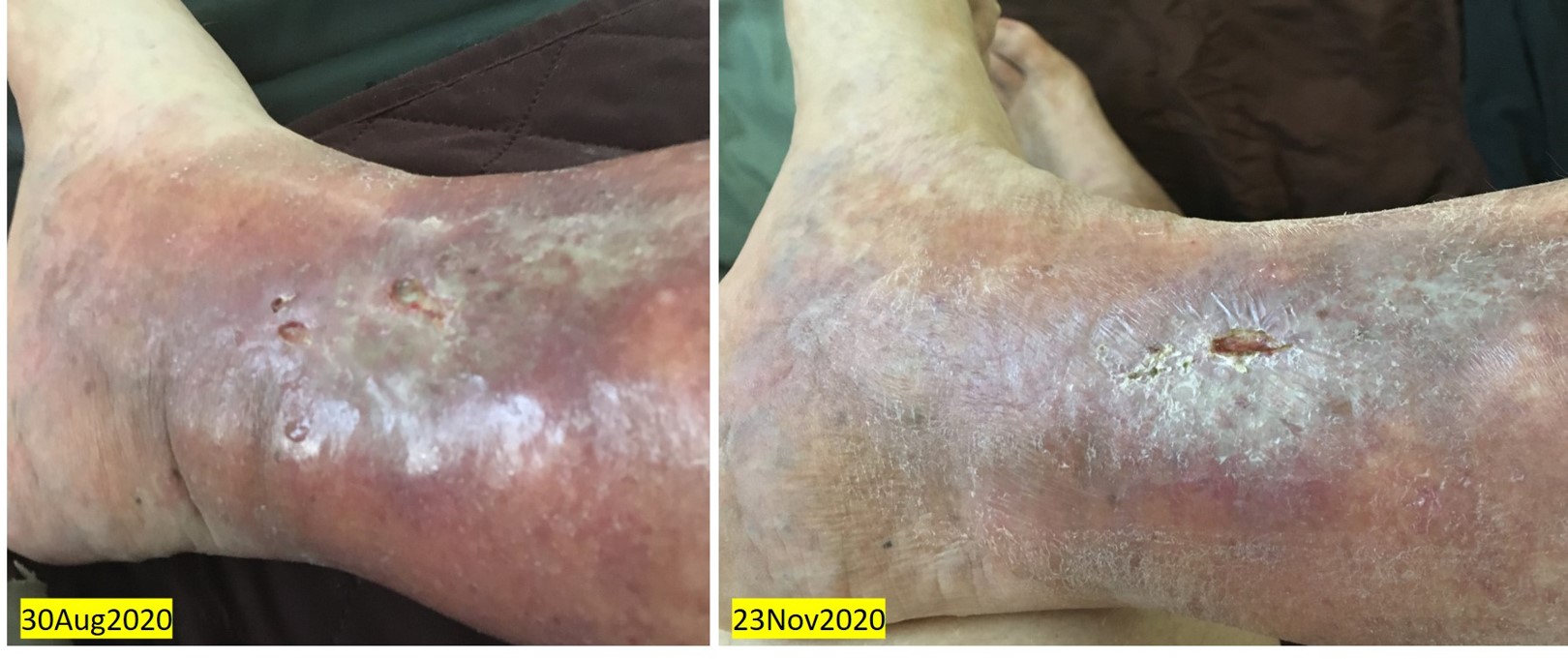
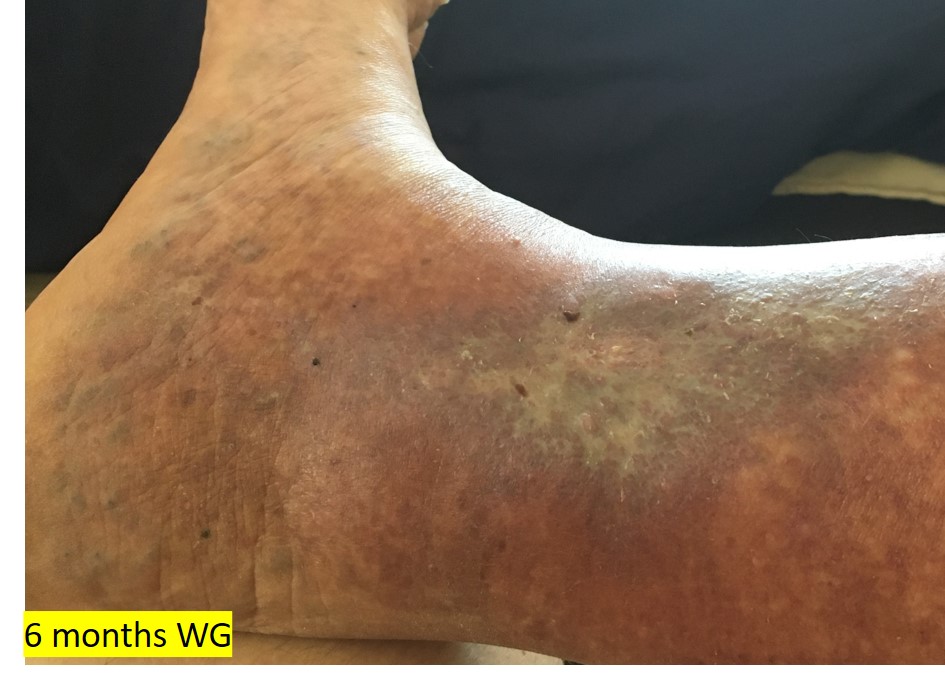
This 71 y.o. male suffered from constantly recurring ulcer on both his ankles for 35 years. Although he was overweight with high blood pressure there were no other underlying medical issues such as diabetes or smoking.
He began applying a light spray of wheatgrass Skin Recovery Spray (just one spray) once a week. Within 6 months, his skin has healed completely.
Case No. 2
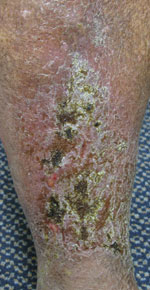
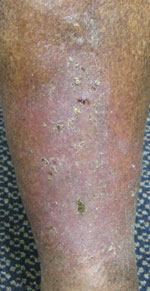
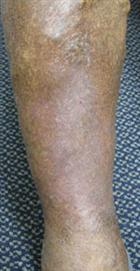
The skin of this 82 year old's lower legs had been breaking for 6 months, and as the skin thins with ageing, often minor injuries cause exudate (tissue fluid) that finds its way through to the skin surface - but even a small wound can grow into a venous ulcer. The skin scales then scabs form over broken areas. If this process is not treated, ulcers can develop, creating further deterioration.
I explained to him how wheatgrass extract could do much to restore blood circulation to the area - that this in turn would create new skin cells capable of strengthening the skin. Then, after applying the extract twice weekly (which is ample), and keeping the area clean and covered with a dry dressing, the wound soon began to heal.
In the photographs we can see that in only 9 days there has been significant improvement to the wound. The scale and overlying crusts have almost disappeared and the ulcerated areas have healed. The skin is smoother and regaining its natural strength and texture.
Case No. 3
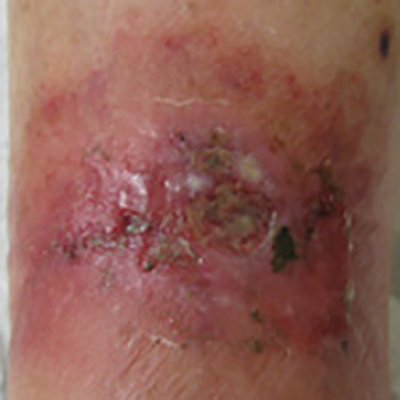
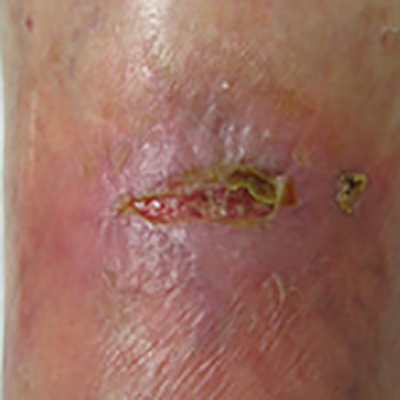
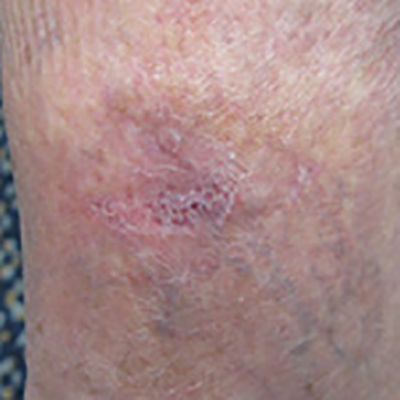
This is an inflamed, very painful ulcer over the shin in an 80 year old man who had been taking corticosteroid medication (prednisolone) for emphysema for nearly 8 years. One of the adverse side effects of steroids is atrophy or thinning of the skin. These patients bleed and bruise easily. Also, immune suppression caused by steroids can predispose wounds to infection and significantly slow the healing process.
This ulcerated lower leg and foot, caused by a minor injury, had been present for 5 months and was clearly not improving. By applying the wheatgrass spray, in just 13 weeks, the ulcer has healed completely. No antibiotics were required and the patient’s pain disappeared after the first month of treatment.
Note: Considerable experience since writing this presentation nearly 20 years ago, has shown that "less is best" when using wheatgrass for treating leg (and other) ulcers. One application per week is a significantly better way for healing to occur.
For instance, this patient (see photo below) has suffered for many years from a very large venous ulcer that gradually increased in size over several years. However, after one application of wheatgrass extract, it is quite clear that the wound has dried up significantly, and the blood circulation to the ulcer area has improved dramatically. Although this patient was lost to follow up, the rapid improvement of the state of his open wound is obvious. His wound would almost certainly have healed had he continued with the treatment.
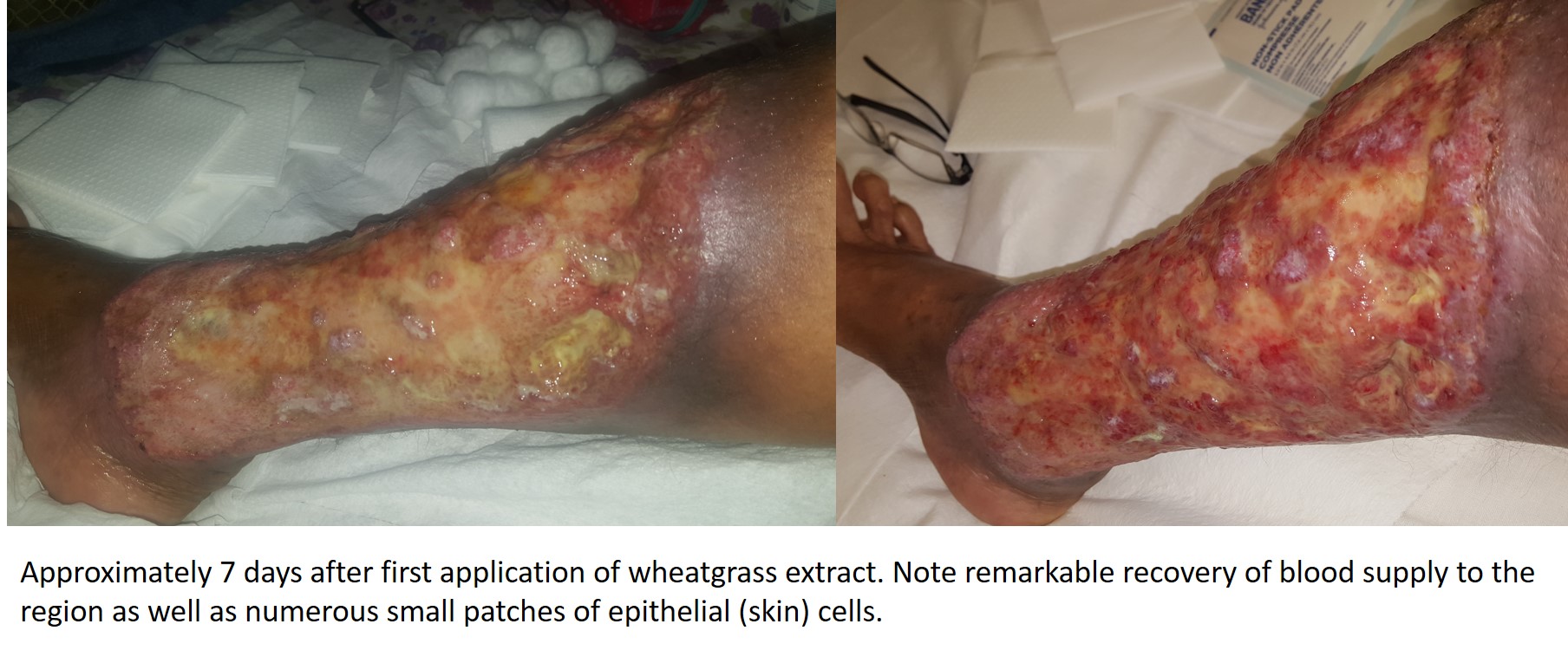
Which wheatgrass formulation should I use for leg ulcers?
Because the Skin Recovery Spray (Dr Wheatgrass brand) contains few ingredients, no allergic reaction has so far been reported. However, creams can block the passage of the bioactives in wheatgrass through the skin and slow the healing process, so it is best to avoid all other skin applications such as moisturisers, petroleum jelly, soap, zinc oxide etc., and use boiled (but cold) water to cleanse the wound.
As we are dealing with fragile skin, it is best to hasten slowly. So, apply just a light spray over the ulcer(s) once a week only - and persevere.
The reason for doing this is that the microcirculation on the floor of the ulcer will likely recover quite quickly, causing re-formation of new granulation tissue (connective tissue cells and tiny blood vessels etc.). However, over-treating may lead to an increase in exudate (fluid containing protein and cellular debris) that might break down the surrounding skin. So, when using wheatgrass, remember that "less is best".
If healing slows or exudate (fluid) increases, stop wheatgrass altogether for two weeks then revert to once-a-month application. Also, the skin surrounding the ulcer(s) tends to strengthen after several weeks which helps reduce skin damage caused by adhesive dressings, tape etc.
Responses can vary, but application of wheatgrass extract once weekly only produces the best results, but daily cleansing of the wound should continue. This simple process enables the patient to be treated at home, but regular follow-ups by a nurse or doctor are essential.
Prevention is better than cure
Although wheatgrass can accelerate leg ulcer healing, it is better to prevent ulcers developing. This can be achieved by applying a small amount of wheatgrass extract (spray preferred), once weekly to vulnerable shin and ankle areas.
Dr. Chris Reynolds.